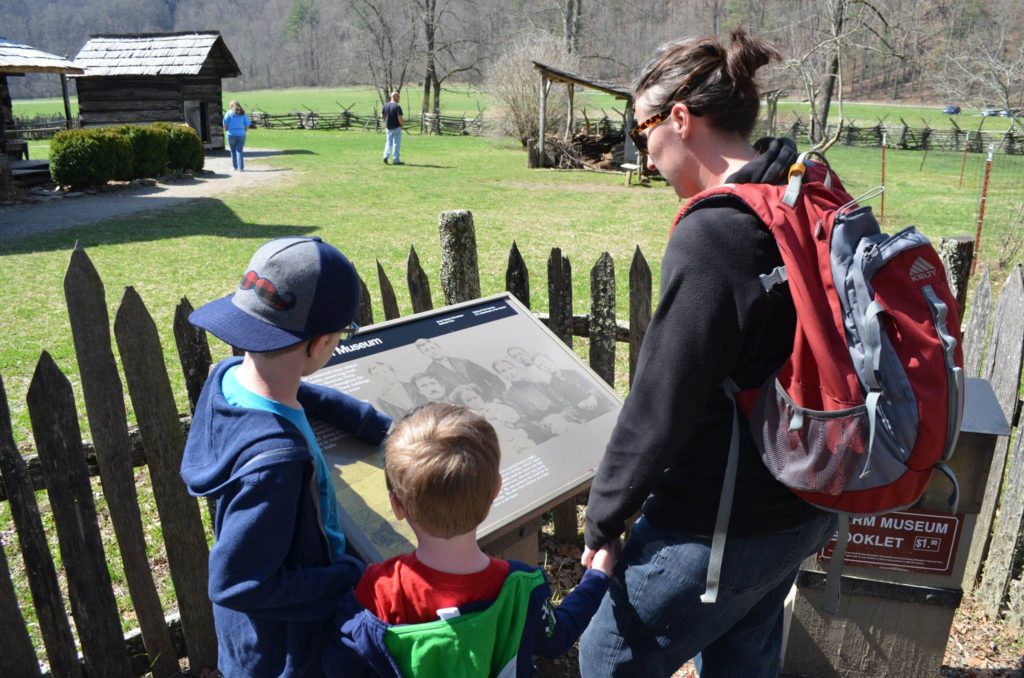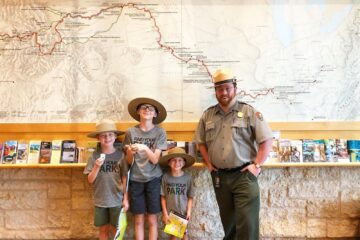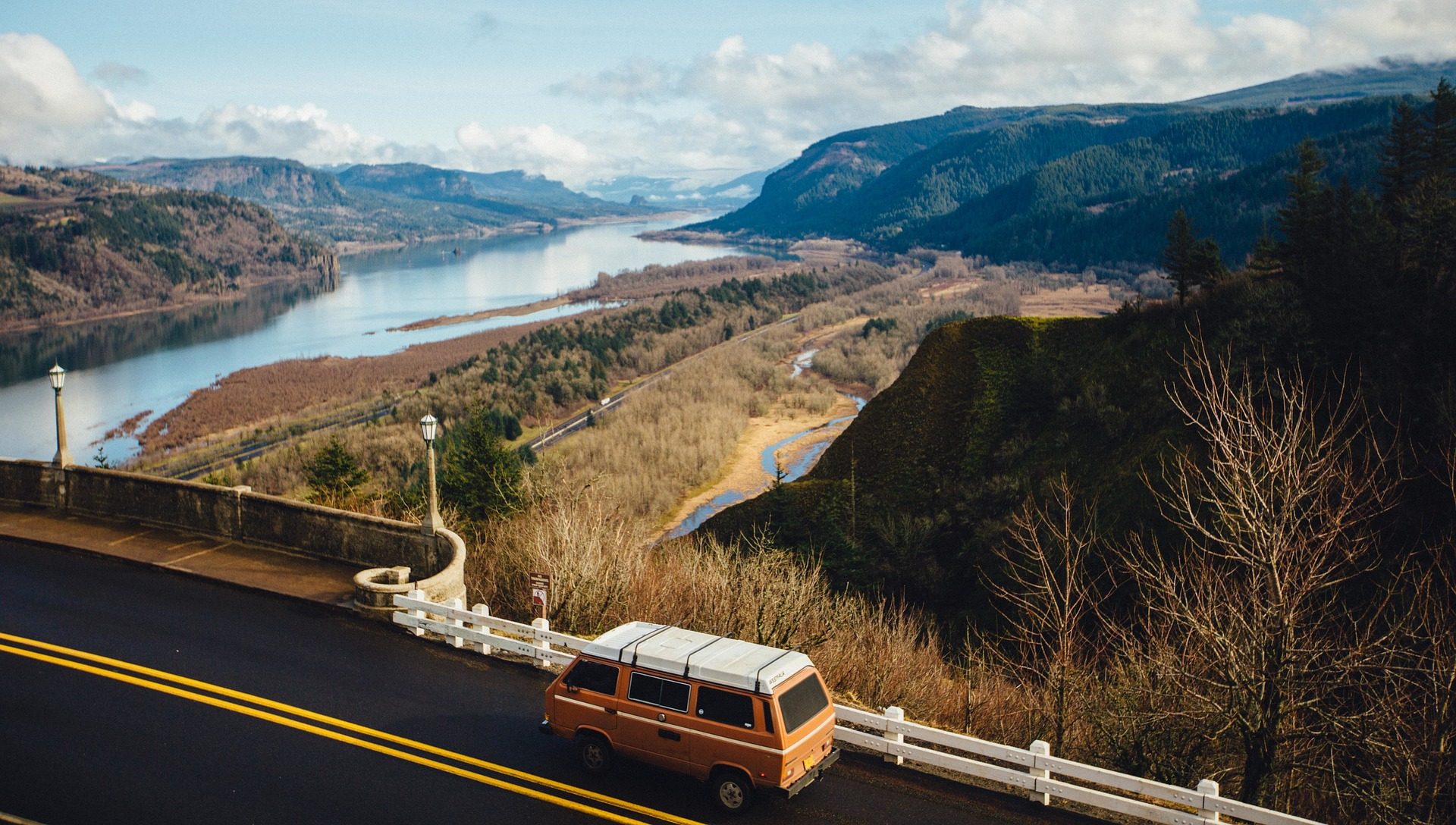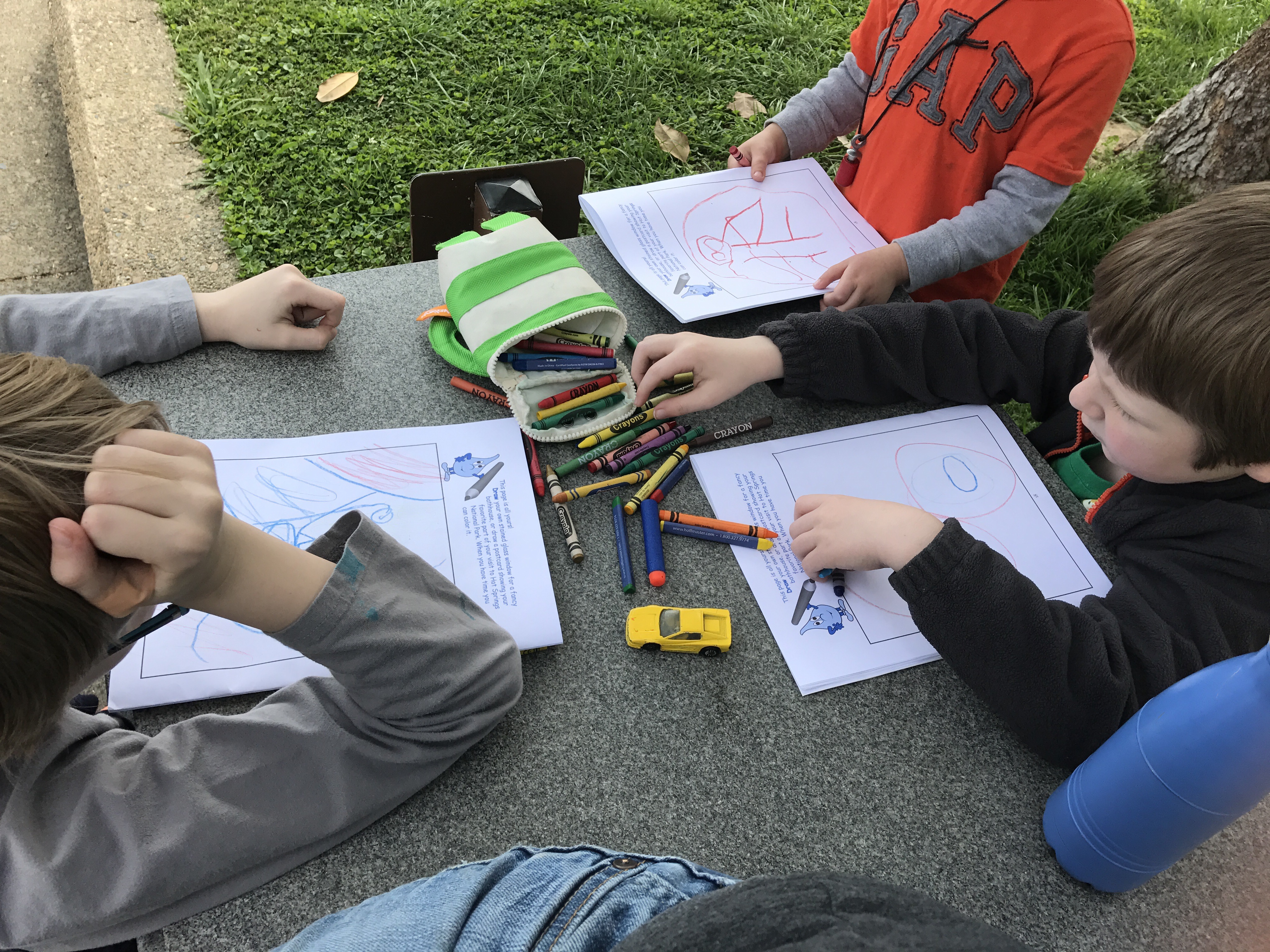Photo: The Museum of Westward Expansion beneath the Gateway Arch in St. Louis, Missouri.
As a homeschooling family (soon to be roadschooling family), we take a bit here and there from many different education ideologies. We like different programmed curricula for many subjects, but we also align closely with the “unschooling” movement, which promotes a student-driven learning experience. It’s not as it sounds—unschooling isn’t “no” schooling—in fact, it’s the opposite. Unschoolers generally consider everything a learning experience. Unschooling teachers have to be “always on”, and help their children dive into the experiences that excite them.
When we set out on an adventure, it’s our job to prepare for the teaching moments when they surface. We put our children in situations that will stimulate their minds, and then we follow up with activities that will keep the learning experience rolling. There’s no better place for our family to practice unschooling science, social studies, and even physical education, than in the National Park system.
The National Park Service operates more than just America’s 58 National Parks. They maintain our country’s National Historic Sites, Historic Trails, Monuments, Scenic Trails, Historic Corridors, Seashores, and more. While in Chicago, our hometown, we aren’t very close to many National Parks; we’re a day’s drive (or much less) from many different NPS sites. What’s great about that is most NPS sites are free, incredibly significant, and have very thorough pre-packaged education programs available for all different ages to download on their website, nps.gov.

Jack at the Gateway Arch
When we visited the Jefferson National Expansion Memorial site in St. Louis—which includes the Gateway Arch, the Museum of Westward Expansion, and the Old Courthouse where the Dred Scott case was tried—we were able to go to the Park Service website and download curriculum. There are pre-visit lesson plans that we worked on in the days before, and post-visit plans for the days following. These guides significantly increased our children’s awareness and excitement about what we were exploring. You can even check out instructional materials on loan (they will ship them for a fee). Things like mounted photos, DVDs, animal pelts, costumes, and the like. These materials are primarily meant for school classrooms, and they are available to homeschoolers.
In addition to the lesson plans, most NPS sites offer a “Junior Ranger” program. You check in with a ranger at a desk or ranger station (depending on the site), and they give your kids a workbook to fill out. It often consists of scavenger hunts, drawing exercises, and retention focused questions. When they finish, they show the book to the ranger and get a Junior Ranger badge, which is a nice sized plastic pin.

Abby and the kids checking out the map of an old homestead in the Great Smoky Mountain National Park.
This stuff can get a little overwhelming and a bit too “prescribed”, so we like to use the days before a trip to figure out what the kids are going to be into, and then focus on those experiences. The pre-visit lesson plans help us do just that, along with using Google Earth and YouTube to explore where we are going, and listening to audio books and podcasts on the drive.
When you visit NPS sites, make sure to get a “passport stamp.” Every NPS site has a stamp at a ranger desk that proves you were there on that date. You can buy the NPS Passport To Your National Parks, which we love, to keep track of where you’ve been. There’s a kid’s version as well—Kid’s Passport to Your National Parks Companion
—which has questions and space to check off things they’ve seen.
Of course, what matters more than anything is getting out there and exploring. Letting kids be inquisitive about what’s around the next trail bend. If you have tips for exploring the National Parks, leave them in the comments below!


